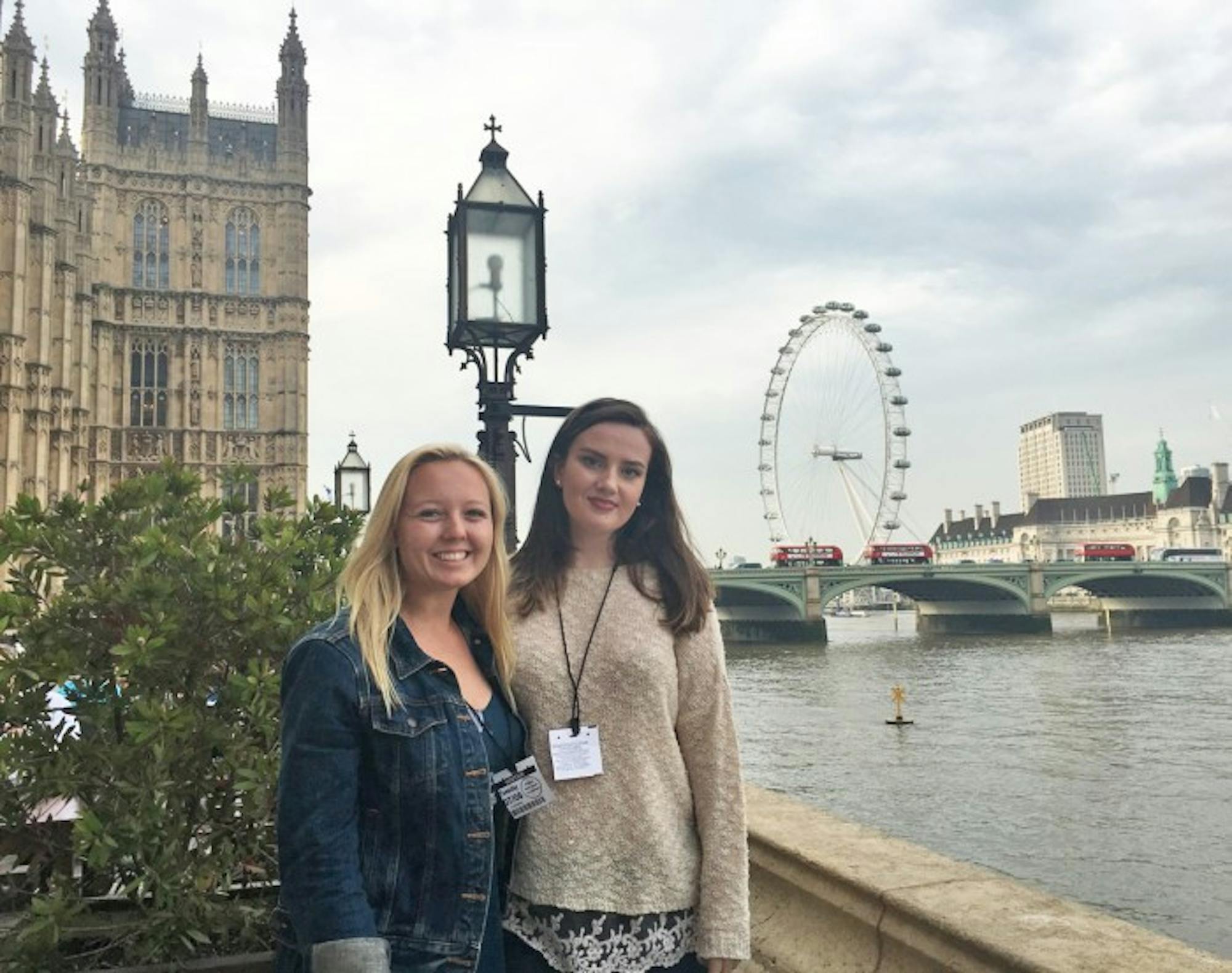Saint Mary’s debuted two new summer study abroad programs this summer: the London LEB Program and an archeology program in Trim, Ireland.
Both programs are open to students from all majors. The London LEB Program is a four-week program. Archeology in Ireland is a six-week program, but two- and four-week long options are also available, according to the Center for Women’s Intercultural Leadership (CWIL).
“I have always wanted to study abroad, but by virtue of being a transfer student and someone who is double majoring, I could never do a semester program,” senior Adrienne Whisman said. “So, I looked for summer programs.”
Junior Kiersten Lieurance said students participate in the London LEB Program through Maryville University in St. Louis. This past summer, two Saint Mary’s students were participants: Lieurance and senior Allison Burns.
The program consists of one class and one practicum. Lieurance took a globalization course, coupled with a practicum at the Victoria and Albert Museum.
“[The] part that I liked best about my classes was the opportunity I got to go and visit all of these prominent businesses in London,” Burns said. “We went to City Hall, the Houses of Parliament, Canary Wharf, Fuller's Brewery and many others, and [we] discussed topics of globalization with prominent business leaders.”
Participating in a practicum allows the students to take things they learned in their classes and take it into the real world. As part of their practicum, Burns and Lieurance studied an exhibit at the museum and, using what they gathered, created a marketing plan.
“The London LEB Program helped me within my major by being able to actually go and see some of the places [and] things I've learned about in class,” Burns said. “Any program or experience that exposes me to the history, religion, art, literature and philosophy I've only previously read about in a book is amazing.”
The opportunity to work in the museum added to the cultural experience the students received from living in London, Lieurance said.
“It was a completely different culture, but everyone we worked with was very welcoming,” she said. “I think it was more a learning experience, getting to understand the difference between their culture and our culture and how that affects the worldly businesses.”
The archeology program also presents an opportunity for students to gather “real world” experience.
Students stay in Trim and excavate the remains of a 13th century Dominican friary, according to CWIL.
“The Trim program is unique,” Whisman said. “It allows students to integrate into Irish culture through a homestay family as well as loads of free time to explore not only Trim, Ireland, but also the rest of Ireland and the U.K.”
Study abroad programs at Saint Mary’s are coordinated by CWIL. Karen Chambers, faculty coordinator of the Ireland program, said CWIL tries to listen to the requests of students as to which programs they would like to partake in.
“On occasion, we have had students request some type of active archaeology experience which we previously had not been able to offer in our portfolio,” she said. “We have a long relationship with Maynooth University — next fall is our 40th year partnering with Maynooth — so we have a long and sustained interest from our students in Ireland, so this program combined the two interests.”
This responsiveness led to the establishment of the archeology program. Whisman and senior Caylin McCallick are two of the students that participated in this program.
“I decided to go because I love history and the thought of being a part of discovering even a small part of history was extremely intriguing,” McCallick said. “I wanted to go to a place where I wouldn't get in trouble for touching historical artifacts.”
Students work with the Irish Archaeology Field School and with professors that work on site with them, Chambers said. It also fulfills several requirements for students.
The program facilitates a homestay for students and requires them to walk to and from the work site. The homestay provides a cultural experience for students that cannot come from simply visiting Ireland as a tourist, Chambers said.
“Ireland is a rich culture, but those who visit as a tourist miss much of the culture that makes it different than U.S. culture,” she said. “Our Trim program is highlighted by a homestay experience in which students are invited into the home life of a family in the town. Understanding cultural differences is inherent in the liberal arts education — seeing that ideas can be viewed differently and learning to appreciate that difference.”
Whisman experienced this exploration of culture during her time in Trim.
“The fact that the dig excavated a medieval friary made me nerd out so hard,” she said. “The dig and the program helped me see history as it was and how it is still with us today. I walked to the dig site every day passing ruins and castles. America doesn't have the luxury of seeing the remains of history from 800 years ago, or even 5,000 years ago.”













